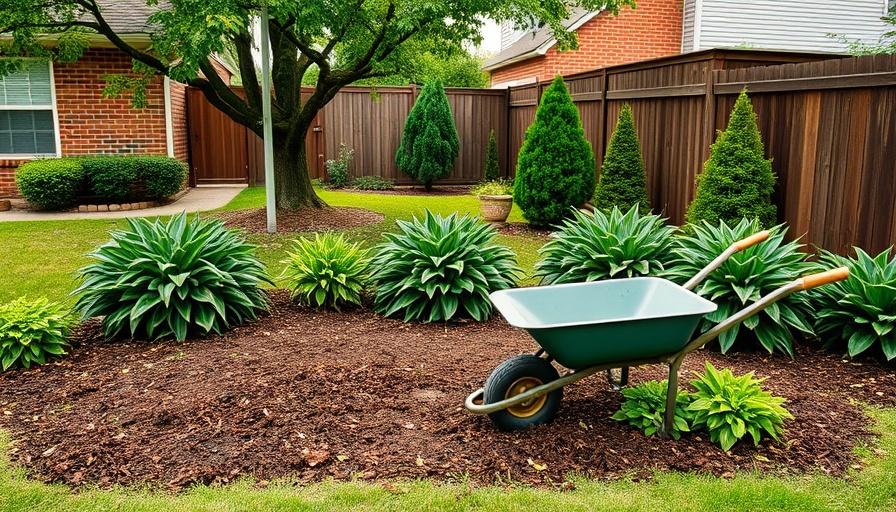
Understanding the Importance of Mulching Your Yard
As spring arrives, homeowners should embrace the delightful task of mulching their yards. Not only does mulching enhance your landscape's aesthetic appeal, but it also provides numerous benefits for your soil health and plant growth. Mulch acts as a protective layer that retains soil moisture, suppresses weeds, and regulates soil temperature, allowing for healthier root systems.
The Essential Tools for Effective Mulching
Before you dive into the world of mulching, gathering the right tools is crucial. Equip yourself with a garden rake, wheelbarrow, and a large shovel. Other useful tools include pitchforks, edging tools, hoes, hand weeders, and a garden hose. Having these tools on hand will make the mulching process smoother and more efficient.
Step-by-Step Guide to Mulching Your Yard
Starting your mulching project involves several key steps:
Step 1: Preparation
Preparation is key to a successful mulching project. Begin by removing weeds, which can compete with your plants for nutrients. Whether you choose to hand-pull or use herbicides, a clean slate is crucial. Next, edge your flower beds to keep the mulch contained. Using an edger or garden edging can create a neat barrier between your flower beds and lawn.
Step 2: Calculating Mulch Needs
To achieve the best results, knowing how much mulch you need is essential. Measure the area you wish to cover and use depth recommendations (around 2-3 inches) to determine how many cubic yards of mulch to buy. Generally, one cubic yard covers about 100 square feet at a depth of 3 inches.
Step 3: Application Techniques
With the right amount of mulch in hand, it's time to apply it. Start by moistening the soil, especially if you’ve used herbicides. Then evenly spread the mulch around your plants, ensuring that it doesn't touch the plant stems. Creating a small trench around plants can be beneficial to prevent moisture buildup.
Step 4: Maintenance of Mulch
Applying mulch is only part of the task; maintaining it is equally significant. Check for decomposition periodically, as breaking down mulch can provide nutrients to the soil. Top it off yearly to maintain an ideal depth and protect against weeds.
Cost Considerations and DIY Feasibility
Mulching costs can vary widely depending on your choice of mulch. For DIY projects, expect prices to range from $20 to $180 per cubic yard, while professional installation can run between $192 to $402 per cubic yard. Consider your budget and physical capability when deciding on a DIY approach versus hiring a landscaping professional.
Spotlight on Mulching Innovations
As with many gardening tools and techniques, advancements in mulching technology have emerged. Many manufacturers are now offering organic and biodegradable mulches that not only beautify but also enrich the soil as they decompose. These products are highly recommended for homeowners interested in sustainable gardening practices.
From Planting to Proficiency: Tips for First-Time Mulchers
If you're new to mulching, start small. Experiment with a single garden bed before tackling larger areas. Observe how mulching improves your garden's resilience against drought and weed invasions and adjust your methods accordingly for future projects.
Common Misconceptions About Mulching
Many homeowners believe that mulch isn't essential or that it requires too much upkeep. This couldn’t be further from the truth. Mulch not only enhances plant growth but also requires minimal maintenance relative to the benefits it provides.
In conclusion, mulching is a rewarding and impactful practice for any homeowner looking to improve their yard. By understanding the tools necessary and following each careful step, you can elevate your outdoor space while supporting a healthier ecosystem.
Take action today! Start your mulching journey and transform your yard into a vibrant outdoor retreat.
 Add Row
Add Row 
 Add
Add 


 Add Row
Add Row  Add
Add 
Write A Comment